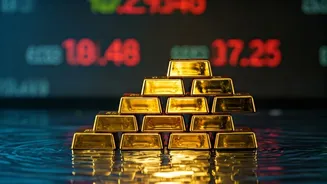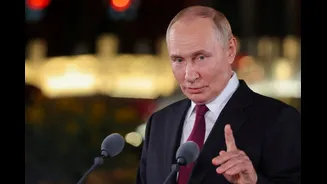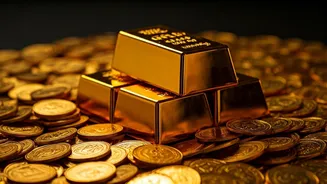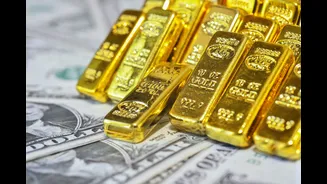Price Plunge Analyzed
Gold prices recently experienced their largest single-week drop since 2013, plunging by as much as 6.3%. This downturn, which saw prices fall to $4,113.05
per ounce, was a stark contrast to the preceding two months, when the metal had surged by 30%. The decline was particularly notable on Tuesday, with a weekly drop of $138.77. This dramatic shift came after gold prices reached new record highs, raising concerns amongst traders. The analysis includes perspectives from market watchers who were split on whether this marked a turning point in the multiyear bull market or a temporary pullback.
Buyer Frenzy Unfolds
Despite the drop, a significant segment of retail investors seized the opportunity to buy. Across several gold-buying hubs like Bangkok, Singapore, and the US, a surge in demand was evident. In Bangkok's Chinatown, a textile factory worker said that she decided to invest, driven by the belief that gold is the best investment and that the dip was an opportunity. Dealers in Singapore and the US reported record sales and interest from 'bargain hunting' buyers. This rush to buy highlighted the confidence of individual investors, who saw the price fall as a chance to purchase gold at a reduced rate.
Traders' Perspective
While retail investors showed optimism, professional traders expressed varying degrees of concern. Many analysts had anticipated a correction, with some pointing to the market being overextended. The rise in bearish put options on gold in the Comex futures market in New York indicated a shift in sentiment. A hedge fund manager, despite being a long-term gold bull, regretted not capitalizing on the rally due to an early bet on a correction. Analysts cited profit-taking and the possibility of central banks pulling back as potential risks.
Factors Driving Decline
Several factors contributed to the gold price decline. Some traders speculated that hedge funds were taking profits, while others noted potential selling by Chinese banks. Before the crash, the rapid rise in gold prices had been fueled by central bank purchases and enthusiasm from retail investors. Central bank buying accelerated after sanctions against the Russian central bank in 2022, and fears about rising government debt levels globally also supported gold's rise. One key risk highlighted was a potential step-back from the market by central banks.
Global Market Reactions
The gold price's plunge unfolded amidst broader market stability. The slide in gold prices was largely confined to the precious metals market, with other major markets like equities, Treasuries, and oil remaining relatively unaffected. This divergence highlighted the unique dynamics at play within the gold market. In Tokyo's Ginza district, a Vietnamese student saw the dip as an opportunity to buy gold, reflecting the long-term bullish sentiment. Conversely, the annual precious metals conference in Kyoto indicated a mixed sentiment, as professionals also prepared for the change in market conditions.















